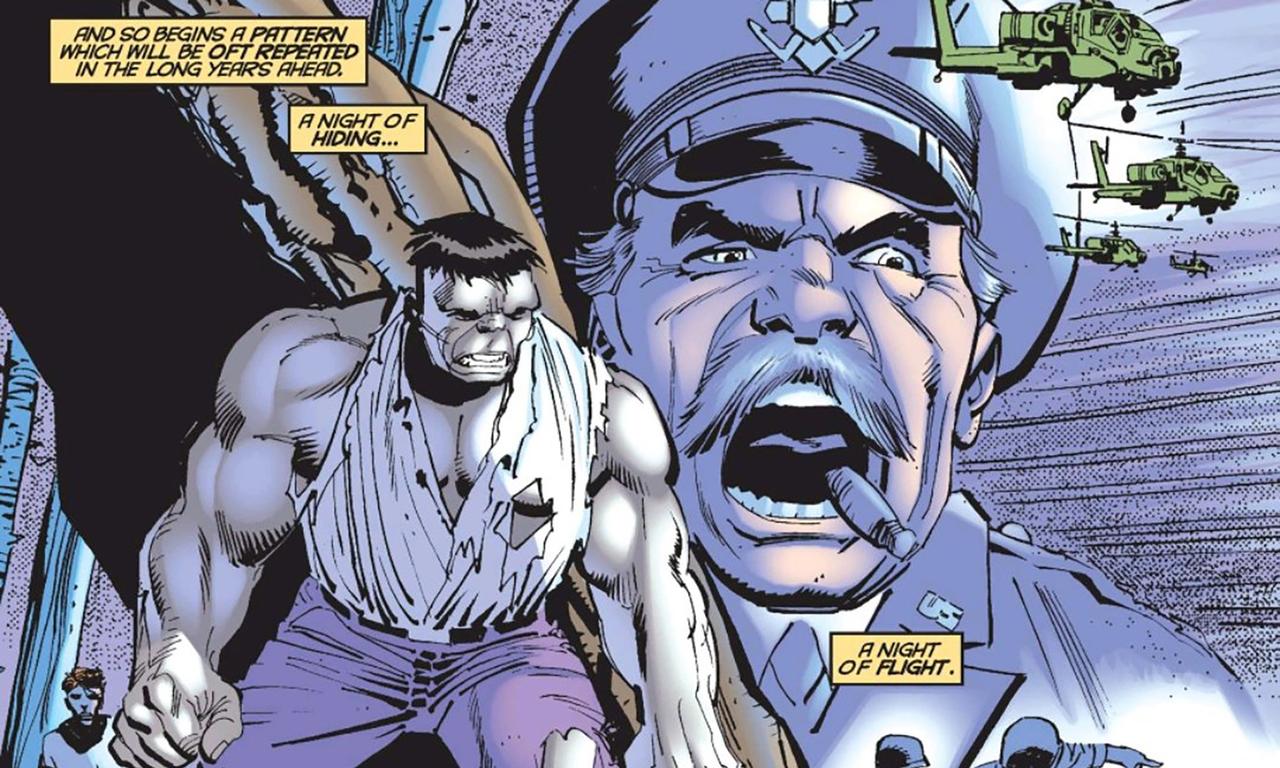If you click on a link and make a purchase we may receive a small commission. Read our editorial policy.
Marvel once planned to retcon the Hulk's origin to include Skrulls and a space laser - until they retconned the retcon
Hulk's origin was almost like an an episode of Ancient Aliens

Popverse's top stories of the day
- Disney & Lucasfilm are quietly planning a 50th anniversary Star Wars movie that's focused on all-new characters
- MEMBERS ONLY: Follow along live to the Mandalorian & Grogu movie panel from Star Wars Celebration Japan 2025!
- WATCH NOW: The gentleman villain Mads Mikkelsen tells us how he balances being charming and despicable in our favorite movies & TV series
Some comic book character's origins have changed over time, and Marvel's jade giant the Hulk has long been the same - but there was a point in the late 1990s where there were plans drafted to upend the whole thing to include shape-changing alien race the Skrulls, a space laser, and a plan to reboot the character like writer/artist John Byrne did with Superman in the '80s.
Who was behind it all? Wrier/artist John Byrne, of course. Well, it worked out well with Superman...

In this week's edition of Marvel executive editor Tom Brevoort's always-fascinating weekly newsletter, he reveals the situation as it happened back in 1999, when he was editor on the main Hulk comic book and Byrne was the writer. They were working together on the story for 1999's Hulk Annual, to be drawn by consumate professional Lee Weeks.
"John sent in the script and I read it, and was unhappy to see that he’d changed a central part of the Hulk’s origin in it," Brevoort recounts. "Rather than Bruce Banner having designed a Gamma Bomb, it was now a Gamma Laser for deep space defense. And rather than the countdown to detonation being permitted to continue by an enemy agent, John had changed it to a Skrull, in a plot point meant to tie into his other then-current project, Marvel: The Lost Generation."
The little-remembered Marvel: The Lost Generation was co-plotted and illustrated by Byrne, with Roger Stern (who'd worked on Avengers and Spider-Man for Marvel, and followed Byrne on DC's Superman) co-plotting and writing the script. The entire series was a significant retcon to Marvel canon, creating a "lost" generation of superheroes in the Marvel Universe between the WWII exploits of Captain America and the debut of the Fantastic Four, while folding in already-established pieces of continuity to tie it into then-contemporary stories.
According to Brevoort, Byrne even gloated ahead of time in an unspecified press interview that he had "Man of Steeled" Hulk's classic origin, referring to Byrne's 1986 reboot of DC's Superman following the publisher's Crisis on Infinite Earths series, which restarted DC continuity.
So, what made Byrne feel as if he could re-write the Hulk's history so easily? Maybe it was the fact that he had already done the same thing to Spider-Man, as part of his 12-issue Spider-Man: Chapter One series, which ran from 1998 through 1999. (Technically, it actually ran for 13 issues, with a "zero issue" added midway through the title's run.) The soon-forgotten series, written and drawn by Byrne, changed key elements of Peter Parker's origin, as well as those of his core villains in an attempt to update the hero for a contemporary audience - but those changes were quickly ignored, as Marvel moved on to a wholesale reboot of the character in the acclaimed Ultimate Spider-Man series.
Back to the Hulk, however. The above is what ended up being approved and drawn in the published 1999 Hulk Annual. So how did Brevoort and Marvel avoid this published retcon of Hulk's origin from being a retcon at all? They subtly changed the whole book the comic was in.
"... the bigger problem for me was that I didn’t like it, and so I approached John with my concerns. These, he batted away, and so now I had two choices; I could either live with it, or I could force him to make changes and likely drive him off of the project. Weighing my options, I chose to go with the former. But I added a 'Chapter One' subtitle to the cover as my subliminal way of stating that I considered this story as canonical as the Spider-Man: Chapter One material; which is to say, not at all. It wasn’t overt, but it was there, and I was convinced that time would eliminate all of the alterations made in these two projects—which it pretty much did."
This subtle move effectively shunted the story from being in Marvel Comics' primary timeline (the '616' universe) into being an alt-universe story like an issue of What If...? - but unbeknownst to Byrne at the time. Byrne ultimately left the title after eight issues, with Brevoort remaining on the title and keeping Byrne's revised origin out of continuity.
Keep up to date on Popverse's Marvel coverage, with these highlights:
- The MCU needs Anya Taylor-Joy's Magik in it (and not just for the X-Men connection)
- How Disney+'s What If...? is the moonshot for the next 50 years of Marvel Studios & the MCU
- Marvel Studios has accidentally created a new Phase that predates Phases 1 - 6: the MCU Phase Zero
- Overgrown children of the atom: Marvel's X-Men can't evolve past their '90s commercial peak
- The biggest outstanding questions of the Marvel Studios' movies & TV shows
- Donald Trump is the landlord for Marvel's House of Ideas
- Marvel Studios swapping out Doctor Doom for Kang offers the chance to jettison the Multiverse Saga
- What Marvel Studios boss Kevin Feige is saying (and not saying) about the MCU X-Men franchise says a lot about the future of the Mutant Saga
- If Marvel is going to bring Loki back for Secret Wars, it's time to give him an upgrade
- In 2021, Sony's boss said people won't miss Spider-Man in its Spider-adjacent movie. Turns out, they do.
Follow Popverse for upcoming event coverage and news
Find out how we conduct our review by reading our review policy
Let Popverse be your tour guide through the wilderness of pop culture
Sign in and let us help you find your new favorite thing.
















Comments
Want to join the discussion? Please activate your account first.
Visit Reedpop ID if you need to resend the confirmation email.